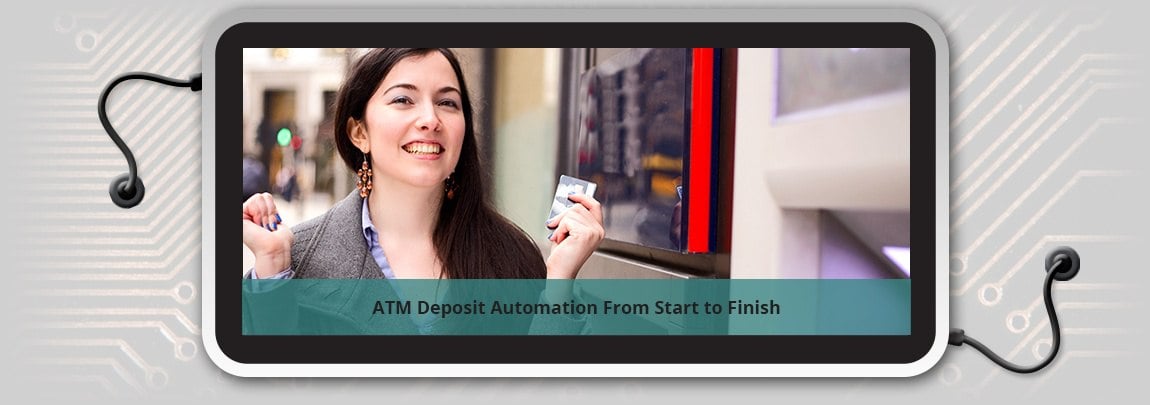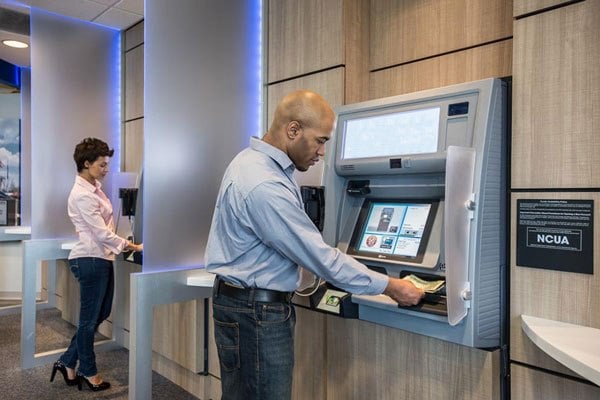How much does an ATM cost?
ATMs, or Automated Teller Machines, have been around a long time now in the banking space. They have provided access to cash for clients for decades,...

The evolutionary curve for automated teller technology is advancing at a rate that can often outpace the capabilities of your current machines. After your FI signs a multi-year agreement with one machine, your fleet technology might become outdated within that timeframe. Many of our clients are reconsidering their approach to ATM payment models and choosing to outsource their ATMs. Purchasing ATMs is still a viable option for many institutions, especially those with internal staff capable of integrating and up-keeping ATM channels.
Here are some things to consider when deciding which buying plan will best suit your FI.
When considering an ATM installation plan, financial institutions should closely consider their internal resources, maintenance arrangements, and budget.
While outsourcing tends to be about 5%-10% more expensive than purchasing, the cost tends to be more fixed than upgrade and maintenance costs. When signing an outsource agreement, an FI can expect to pay the same monthly cost for the duration of the institution’s contract term (typically a five-year agreement.) FIs can then approach their ATM strategy every five years without worrying about becoming stagnated by emerging technology.
If your FI is outsourcing, it’s less likely to be held responsible for insurance on damaged machines. Your service provider will be financially responsible for most of the damage to the hardware.
Purchasing ATMs might be a better option for FIs that want a lower upfront cost and/or those that would like to maximize the machines’ functionality over 10-15 years, or the full product lifecycle. Purchasing might also allow an FI more flexibility over its maintenance contracts. FIs that purchase will likely have year-to-year maintenance agreements with their service providers rather than a five-year contract.
Owning the hardware is also helpful when an FI needs to downsize their fleet or move machines to new locations. You can easily sell your machines back onto the open market. In outsourcing agreements, the fixed price will not change after downsizing your fleet.
Another important factor to consider is your internal staff’s capabilities. For FIs that don’t have the manpower necessary to regularly integrate and update its channels, as well as handle patching and compliance initiatives, outsourcing might be a better option. Outsourcing reduces the amount of effort necessary for your internal team to fully sustain your ATM channel. The client can then offload a lot of that work onto their service provider.
FIs that are well-positioned to take on this workload with their internal resources and employees might choose to purchase their fleet and take advantage of the financial savings that can come with that decision. In an outsourcing agreement, there’s likely financing involved at a higher rate than Is necessary when purchasing a fleet.
With outsourced ATMs, FIs can expect to pay the same predictable monthly fee for their fleet. This price typically covers hardware, software and software maintenance, and managed services. The fee structure is set for a five-year period, during which all of these features (as well as hardware and installs) are included. Most outsource programs range from between $600-$1,500 a month, depending on the type of machine the FI implements and the configuration of the machines. This price includes software and machinery upgrades and typically only increases when the user wants to increase functionality (for example, going from cash dispense only to deposits.)
Purchasing ATMs is usually a one-time cost for the hardware, and maintenance rates can change on an annual basis. On average, upgrade costs for compliance are about $3,000-$4,000 every three years. The hardware will depreciate over time and will not be worth the same amount they were during the initial purchase.
As managed services have evolved, the gap between outsourcing and purchasing has narrowed. Clients can offload a lot of compliance and patchwork onto their service providers.
Institutions that want to use several service providers (for things such as installation, managed services, and processing) might want to consider our ATM outsourcing program as it allows FIs to use multiple providers. Our program allows your FI to choose among the processors that are available to you, QDS included. If your FI chooses to outsource through our program, but is tied to another processor’s agreement, you have the flexibility to keep that processor and choose which one you’d like to use in the future.
If your institution normally buys things and keeps them for an extended period of time, purchasing your machines is likely the best option for you. If you’d prefer a set, predictable cost over a five-year pay period, or if you’re looking to reduce your internal staff’s workload or internal management of the channel, outsourcing is likely the best fit for your FI, though it tends to be slightly more costly.
If you believe the technology curve is shortening, you can make the decision to open a new agreement with new equipment rather than trying to use an older asset for as long as possible.
.jpg)
ATMs, or Automated Teller Machines, have been around a long time now in the banking space. They have provided access to cash for clients for decades,...

Background: ATM and Deposit Processing Then and Now The steady growth of deposit automation since the early 2000s -- also known as Check 21, no...

1 min read
As market demand for Interactive Teller Machines (ITMs) continues to rise, many financial institutions are evaluating the role of these devices in...